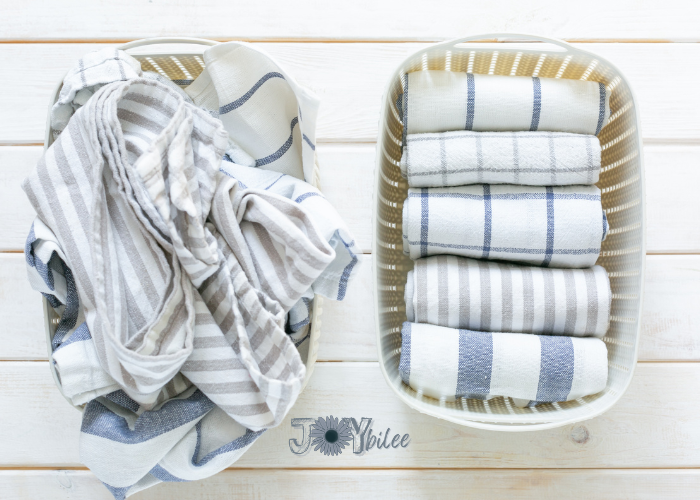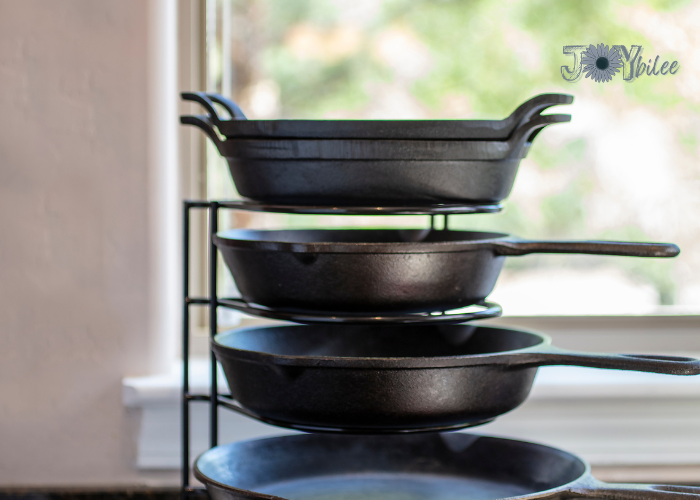Tiny Tasks are actions that help you organize and clean, that can be done in 15 minutes or less that move you forward on your goals and help you make tangible progress. They feel good and are an easy way to break down a monumental task into manageable, bite-size pieces. If you’ve struggled with procrastination or getting bogged down in the details, using the Tiny Task strategy can break the stale-mate.
“Great things are done by a series of small things brought together.”
–Vincent Van Gogh
This is true for great painters, musicians, business women, mothers, and healers. I like to think of the “small things” as Tiny Tasks. A Tiny Task is something you can do in 15 minutes or less that will move you forward in a goal. When we use these tiny tasks to organize and clean our home we break down a monumental job into bite size pieces.
Tiny Tasks help you avoid procrastination by giving you a concrete action you can take to move forward. It might be organize the kids’ toys, clean or declutter the kitchen countertops, clean the bathroom sink, mop or vacuum the living room floor, or even wipe out the microwave. When tiny tasks are done on a daily basis, it doesn’t take long to organize and clean a home. Though you might not create an Instagram-worthy home this way, the changes you create through Tiny Tasks will be long lasting. And with this method of organization it doesn’t have to feel overwhelming.
When it comes to home management, decluttering, organizing and cleaning, or homesteading mastering the tiny task can make a huge difference in your peace of mind. As soon as the task is completed its off your mind. It no longer needs to occupy space, leaving you free to do other things.
When I was a young mom, homeschooling 3 littles, I read a book, “The Messies Manual” by Sandra Felton. I tried to apply the organizational tips and house cleaning schedule in that book, but I was a complete failure. Its hard to be clean and organized on 4 hours of sleep. I needed a different cleaning schedule. One that worked for me.
Some books on decluttering suggest that you close yourself in a room, deconstruct the room, empty closets, cupboards, and shelves, and then organize and put everything back in its place — discarding or donating what no longer has meaning for you. The experts recommend that you have a pile for trash, a pile for the garage sale, and a donation bin. They even give you questions to help you simplify and evaluate your belongings. “Does it bring you joy?” “Have you used this item in the last 3 months?” “Can you replace if for less than $20.”
If you have a big decluttering task on your list, this cleaning and decluttering technique may be beneficial. So I’m not knocking it if that’s the way you work. But for me, that idea is overwhelming. Instead I use “Tiny Tasks” to move ahead, simplify, organize, and clean. I also use Tiny Tasks to move forward on my bigger goals like writing 2 books for my publisher in a year.
The Tiny Task method isn’t just for keeping a clean and organized home. It also works for bigger projects. It can be your best tool to accomplish your goals and to keep moving forward on the things that are important to you.
Cleaning Routines
Daily cleaning routines are different than tiny tasks. These are the things you do daily to establish a clean and orderly home. They include making the bed, cooking meals, doing the dishes, scrubbing the toilet, wiping out the shower with a squeegee, or emptying the lint trap on the clothes dryer. I don’t add these routine chores to my tiny task list. Like brushing your teeth, these chores will become habitual as you do them on a regular basis. You won’t need to write them down if they are already habits for you.
I save my tiny task list for the things that don’t fit into these daily or even weekly cleaning routines. These are the tasks that are hard to get to. I don’t need to write on the list “pick up the dirty laundry and put it in the hamper” or “fold the clothes and put them away”. These jobs are habitual for me. But if you are establishing a new cleaning routine, you might want to add them to the Tiny Task list until these new tasks become routine for you. Like meal planning — they can be hard to do at first but become easier for you the more you do them.
Here’s what some of my Tiny Tasks look like:
- Deep-clean one bathroom
- Refresh the spices in the cupboard
- Organize the computer cords
- Declutter the kitchen counters
- Clean out the refrigerator
- Descale the dishwasher
- Change and wash the bed sheets
- Replace the pillows on the bed
- Mix up the cleaning solutions needed for a month
- Clean one counter in the kitchen
- Wash a floor
- Organize 1 book case
- Start 2 jars of sprouts or trays of microgreens
- Weed 1 4×10 garden bed
- Plant 24 seed pots
- Wash, chop, and dehydrate apples (or another fruit or veggie)
- Spend 15 minutes organizing a closet or drawer (set the timer)
- Remove the leaves from a bundle of dried herbs and package for winter
- Strain and bottle a tincture, oxymel, or infused oil
- Make an herbal tea blend and package it
Your tiny tasks will look different than mine, but there are a few characteristics that all Tiny Tasks have in common.

Characteristics of Tiny Tasks
1. They are essential to a goal (not busy work). There are dozens of tasks I do every day that are just habits that I wouldn’t add to my list of Tiny Tasks, like brushing my teeth, or making dinner.
2. They are self limiting — in 15 minutes the job is finished or if its a longer job, I’m at a point after 15 minutes that I can walk away.
3. They offer feelings of success when the task is complete. Cross that baby off your to-do list!
4. They can be completed “in the margins” — in the waiting time while dinner is cooking or I’m waiting for a meeting to start, for instance. (for more information about “in the margins” strategy see my class “Timewise Remedies”).
3 steps to help you make the most of Tiny Tasks opportunities?
- Keep cleaning supplies, brooms, dust cloths, in a basket or give them a designated home so that you can grab them when you have a tiny task, and don’t need to hunt for them.
- Organize pencils, pens, journals, or to-do lists in an easy to use spot, near your work area.
- Purchase a mechanical timer so you aren’t distracted by your phone when you start to tackle the tiny task (This one made me smile)
Pro Tip: Keep a list of Tiny Tasks, that you can complete in 15 minutes or less in your journal or in your weekly planner. When you find 15 minutes of waiting time, grab one item on your list and complete it. You’ll feel so good you did.
Tiny tasks can help you reach your goals of a clean and organized home, a well stocked herbal apothecary, or even an amazing holiday season.
Take 15 minutes and organize your Tiny Task list so that you can get those “small things” done.
Help for the Time Challenged:
For more help in finding the lost time in your day and using it more strategically to reach your goals, check out my new class “Time Wise Remedies, a remedy for the time-challenged”.
In this training Chris shares the strategies she uses to manage the time factor, in studying herbs, harvesting herbs, and making herbal remedies.
♥We’ll look at 3 different time saving and time management strategies
♥You’ll do an exercise to help you find time in surprising places
♥You’ll gain some important insight that will help you craft your customized herbal apothecary in the time you actually have.
♥You’ll learn the best way to use herbal remedies in your family so that they are effective and safe









Leave a Reply